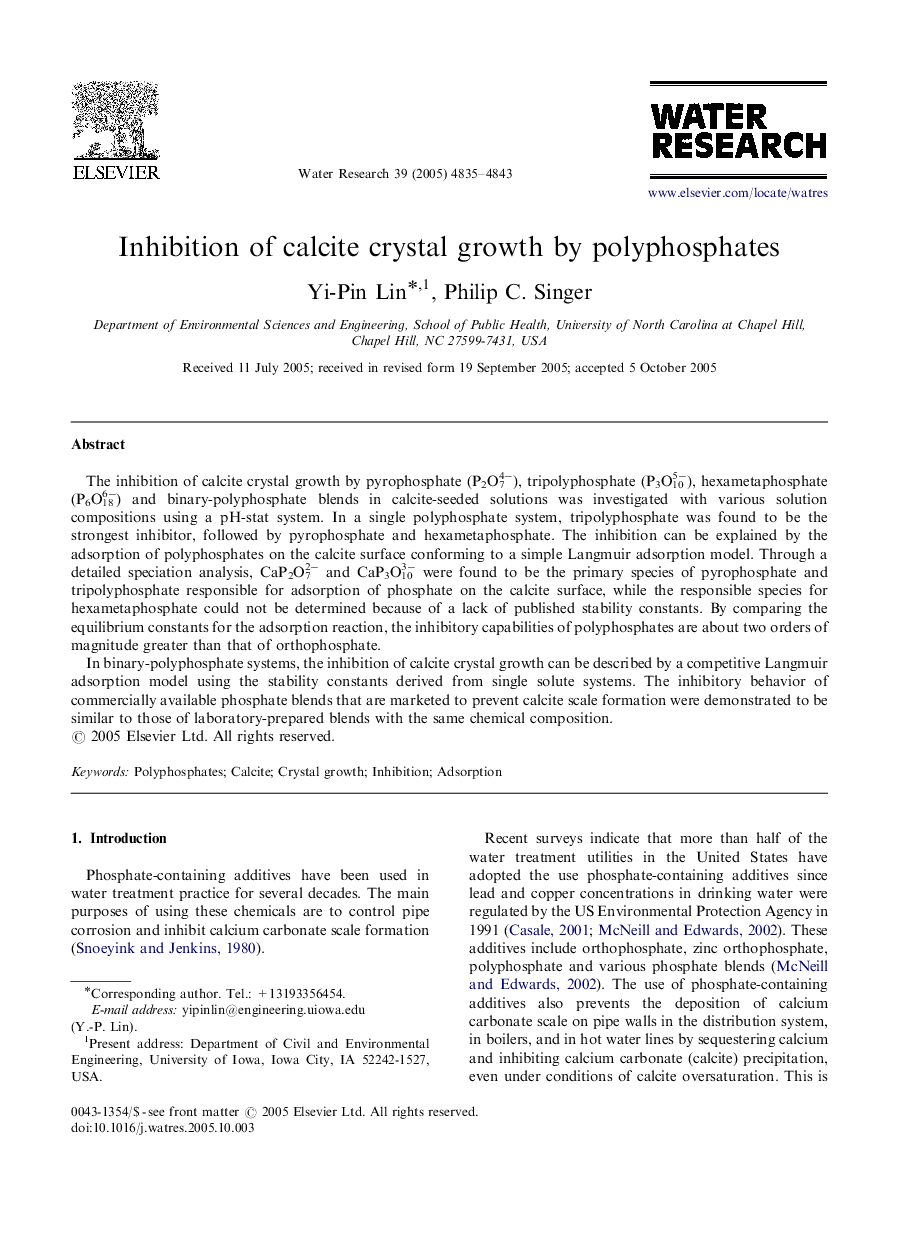| کد مقاله | کد نشریه | سال انتشار | مقاله انگلیسی | نسخه تمام متن |
|---|---|---|---|---|
| 4484847 | 1316933 | 2005 | 9 صفحه PDF | دانلود رایگان |

The inhibition of calcite crystal growth by pyrophosphate (P2O74−), tripolyphosphate (P3O105−), hexametaphosphate (P6O186−) and binary-polyphosphate blends in calcite-seeded solutions was investigated with various solution compositions using a pH-stat system. In a single polyphosphate system, tripolyphosphate was found to be the strongest inhibitor, followed by pyrophosphate and hexametaphosphate. The inhibition can be explained by the adsorption of polyphosphates on the calcite surface conforming to a simple Langmuir adsorption model. Through a detailed speciation analysis, CaP2O72− and CaP3O103− were found to be the primary species of pyrophosphate and tripolyphosphate responsible for adsorption of phosphate on the calcite surface, while the responsible species for hexametaphosphate could not be determined because of a lack of published stability constants. By comparing the equilibrium constants for the adsorption reaction, the inhibitory capabilities of polyphosphates are about two orders of magnitude greater than that of orthophosphate.In binary-polyphosphate systems, the inhibition of calcite crystal growth can be described by a competitive Langmuir adsorption model using the stability constants derived from single solute systems. The inhibitory behavior of commercially available phosphate blends that are marketed to prevent calcite scale formation were demonstrated to be similar to those of laboratory-prepared blends with the same chemical composition.
Journal: Water Research - Volume 39, Issue 19, November 2005, Pages 4835–4843